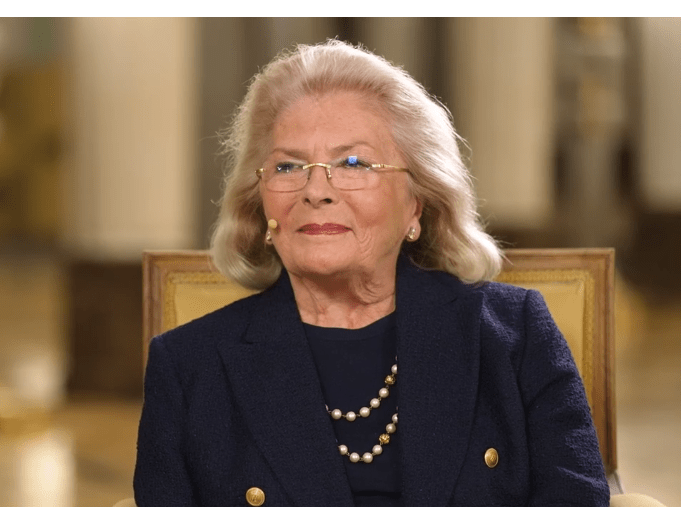Elżbieta Penderecka’s journey at age 78 is a model for quiet perseverance and cultural leadership. With a physics background and a shift toward the arts, she created frameworks for artistic expression in addition to festivals. Her history, which is frequently just referred to as “wiek 78,” becomes more than just a figure; it becomes an indicator of her enduring impact.

She may have followed the typical academic route, beginning as a physics student at Jagiellonian University in Kraków. Rather, she decided to combine two different fields—artistic intuition and rigorous logic—into a career that would span more than fifty years. Her transition was deliberate and forward-thinking rather than sudden. She viewed music as architecture as well as a performance.
Elżbieta Penderecka – Personal & Career Profile
| Attribute | Details |
|---|---|
| Full Name | Elżbieta Ludwika Penderecka (née Solecka) |
| Date of Birth | November 19, 1947 (Kraków, Poland) |
| Date of Passing | October 31, 2025 (aged 78) |
| Education | Studied Physics at Jagiellonian University |
| Main Occupation | Cultural activist, festival organizer, arts patron |
| Key Achievements | Founder of the Wielkanocny Festiwal Ludwiga van Beethovena; Co‑founder of Sinfonietta Cracovia |
| Spouse | Composer Krzysztof Penderecki (married 1965) |
| Source Website |
Her contribution to arts management is exceptionally successful. She became Krzysztof Penderecki’s producing partner in 1965, not only his wife. She organized his engagements, oversaw his tours, and operated his secretariat. She didn’t stop there, though. She started her own initiatives, including the Wielkanocny Festiwal Ludwiga van Beethoven in 1997, the private organization Heritage Promotion of Music and Art (founded in 1990), and Sinfonietta Crocovia. Every action demonstrated a combination of administrative accuracy and imaginative aspiration.
Given the current state of institutional stability and cultural funding, her narrative is particularly relevant. Through years of gradual effort rather than flashy flashes of glitz, Penderecka created a network of cultural activity that was remarkably resilient. She realized that orchestras and festivals function similarly to ecosystems, with numerous different components cooperating and humming with energy like a beehive. According to the example, a festival can only succeed if all the elements—singers, locations, finances, and publicity—work together seamlessly.
As she became older, age was more of a qualification than a sign of deterioration. She was still overseeing programs, teaching artists, and planning international collaborations at the age of 70+. Her route is especially creative for female cultural leaders since she challenged the societal narrative that women become less important as they age. Rather, she stepped up her leadership. She had depth, perspective, and a platform from which to lead rather than follow because of her age.
Reflections on her accomplishments and time management were prompted by her death on October 31, 2025, at the age of 78. According to obituaries, she supported the arts, established institutions, and worked with Krzysztof Pendeecki for more than 50 years. One important point, nevertheless, sticks out: she enhanced legacy rather of merely preserving it. She allowed her age to define stewardship rather than retreat.
Young artists especially benefit from her influence. Polish musicians had the chance to participate at a high level both domestically and abroad because to the mechanisms she helped establish. Her work continues to serve as a reminder that cultural ecosystems require visionaries, structure, and continuity at a time when such opportunities seem more competitive and fractured. She served as an example of how leadership develops over time.
Although her marriage to Krzysztof has been mentioned a lot, her role as his creative co-pilot has not received as much attention. In order for the composer to concentrate on creating, she supplied the organizational strength, the logistical backbone, and the external coordination. Although it is essential to long-term success, this relationship is rarely highlighted in arts tales. It serves as a lesson: inspiration requires integration, and skill need infrastructure.
In the modern day, where cultural endeavors are frequently transient or influenced by fads, Penderecka’s chronology is quite pertinent. She was not a sprinter; rather, she was a long-distance runner. Her career serves as a reminder that it takes decades of work, iteration, relationship-building, and trust to bring about significant cultural change. “Age” is reframed as “asset” in that perspective.
There are social ramifications to her biography as well. Her role as an ambassador of identity and exchange was to promote Polish culture abroad. Her orchestras, young musicians, and Polish music gained international recognition thanks to the festivals she staged. She created connections between regional talent and global recognition. She accomplished this by giving a national narrative a worldwide resonance, which was incredibly creative for someone with a physics degree.
Search queries may contain the term “Elżbieta Penderecka Wiek” as a straightforward fact check—what was her age?— However, the significance of that age is more complex: 78 years of mentorship, institution-building, artistic diplomacy, and cultural vitality. Her age is more than simply a number; it serves as a prism through which we can observe how sustained commitment changes environments.
Her work addresses evolving trends in cultural leadership from a wider perspective. The approach she provided is important as arts administrations struggle with reduced financing, digital disruptions, and shorter attention spans. She created value rather than chasing virality. She planned sustainable initiatives rather than rushing into them. At an age when many people stand aside, she stepped forward instead of fading.
Her demise prompts contemplation about the creation of legacies. Festivals she started are still going strong, orchestras she helped start are still playing, and young artists she helped advance are still making progress. Individual leadership becomes generational effect as a result of its continuity. Because of this, what transpired during it is more important than her age. It demonstrates how time can become architecture when employed wisely.
